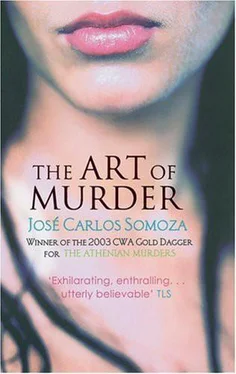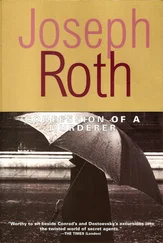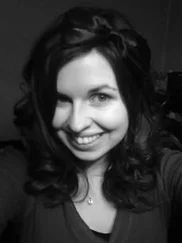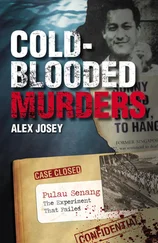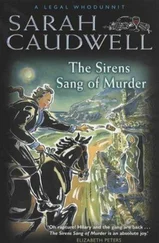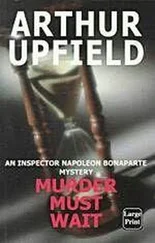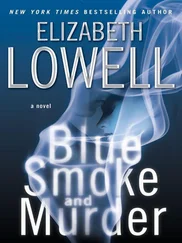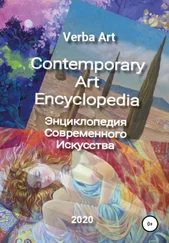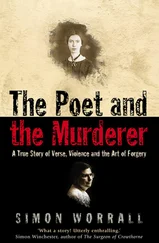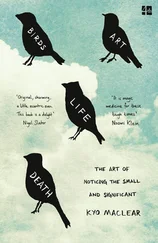Jose Somoza - Art of Murder
Здесь есть возможность читать онлайн «Jose Somoza - Art of Murder» весь текст электронной книги совершенно бесплатно (целиком полную версию без сокращений). В некоторых случаях можно слушать аудио, скачать через торрент в формате fb2 и присутствует краткое содержание. Жанр: Триллер, на английском языке. Описание произведения, (предисловие) а так же отзывы посетителей доступны на портале библиотеки ЛибКат.
- Название:Art of Murder
- Автор:
- Жанр:
- Год:неизвестен
- ISBN:нет данных
- Рейтинг книги:4 / 5. Голосов: 1
-
Избранное:Добавить в избранное
- Отзывы:
-
Ваша оценка:
- 80
- 1
- 2
- 3
- 4
- 5
Art of Murder: краткое содержание, описание и аннотация
Предлагаем к чтению аннотацию, описание, краткое содержание или предисловие (зависит от того, что написал сам автор книги «Art of Murder»). Если вы не нашли необходимую информацию о книге — напишите в комментариях, мы постараемся отыскать её.
Art of Murder — читать онлайн бесплатно полную книгу (весь текст) целиком
Ниже представлен текст книги, разбитый по страницам. Система сохранения места последней прочитанной страницы, позволяет с удобством читать онлайн бесплатно книгу «Art of Murder», без необходимости каждый раз заново искать на чём Вы остановились. Поставьте закладку, и сможете в любой момент перейти на страницу, на которой закончили чтение.
Интервал:
Закладка:
The front door to the Foundation was closed, but that meant nothing, if he's brought them to the Atelier, he must have the keys.' One of the men got out and dealt with the electronic keypad that allowed them access. As the van negotiated the descent, the car-park lights came on. Under the blinking fluorescent strips they could see it was empty and silent. But Bosch still thought the other vehicle might be there somewhere.
Then all at once there was the parked van, as if it had been lying in wait for them, beside a block of lifts. To Bosch's surprise this discovery, which apparently confirmed his theory, had the effect of almost totally unnerving him. He swivelled in his seat and hit Wuyters on the arm. 'Here! Stop here!'
The engine was still running when Bosch leapt from the vehicle. He was so nervous he had forgotten he was still wearing the radio headset, and the cable caught in his seat belt, tugging violently at his head as he got up. He threw the headset off, cursing as he did so. His big hands were shaking. He was old: it was a judgment he had no time to reflect on. Leaving the police meant he had got rich, fat and old. He ran towards the other van, sensing that his men were following him. He wanted to shout to them, but could not draw breath. He could not believe how out of shape he was. He was afraid he would have a heart attack before he could even decide what to do.
The van looked empty, but they had to check it out. He opened the front door, looked inside, and breathed in a rasping smell of oil paint. No one there.
Fine, Lothar, fine, you stupid man. You've proved they might be here. So now, where are they?
There were five different buildings in the Old Atelier. They could be in any of them. He'll have taken them to the workshops, Bosch reasoned. That's the safest place. But that was not much help either. The workshops were spread over five floors and four basements. For the love of God, which one would they be in?
Think, you old fool, think. A roomy, quiet place. He needs to make recordings. And there are three figures…
His men were examining the back of the van. It was empty, but it was obvious that a short time before there had been a painting there. The goods lift,' Bosch suddenly muttered. He was still short of breath, but ran towards the lift shaft.
'If he parked here, it was so he could use the goods lift. That goes down to the basements, so there are four possible floors for us to search. He could be in any of them.'
He stopped to look at his men. They were all young, and all looked as bewildered as him. Their hair was streaming from the rain. Bosch himself was amazed at the assured way he gave orders and deployed his men: two of them were to search the third and fourth floors; Wuyters and he would take the second and first basements. Whichever group found them first would contact the others by radio. First and foremost though they were to protect the art work: if they had to take urgent action, they should.
‘I don't know what he looks like, or if he has others with him,' Bosch added, 'but I do know he is a very dangerous individual. Don't give him any chances.' The goods lift opened. Bosch and his men piled in.
They had all pulled out their weapons. Wuyters had a small Walther PPK as a backup, and Bosch asked him for it. Feeling the familiar weight of the metal 'L' in his hand, Bosch hesitated. He wondered how good his aim was nowadays: he had not used a gun in years. Should he ask for help? Reinforcements? Call April? His mind was a flaming wasps' nest. He decided there was no time to lose. It was up to them. They would have to find the Artist and stop him. The goods lift moved off agonisingly slowly.
21.51.
The beginning and the end, she thought. The beginning and the end were there, and she was staring at them.
At that moment she would have loved to have been able to count on Oslo's opinion, but she understood that poor Hirum would take a long time to speak, or even to think coherently, after seeing something like this. Faced with this work, Hirum Oslo would hardly have been able to do anything more than stand open-mouthed, eyes wide, for much longer than she did.
‘It's almost finished,' murmured Stein, clouds of vapour coming from his mouth. 'What's missing is the destruction of Susanna, of course. When Baldi sends it, the paindng will be complete.'
What could it be compared to? wondered April Wood, blinking at the sight. What landmark in the history of art was anything like it? Guernica? The Sistine Chapel? She walked slowly around it to be able to take it all in: it was spread out on the floor. The
Pieta? The Demoiselles d'Avignon? A border, a limit, a point beyond which art changes altogether? The moment when the first man dipped his fingers in paint and drew an animal on the wall of his cave home? The moment when Tanagorsky got up on a platform and shouted to an astonished public I am the painting'?
She twisted her mouth, collected some saliva, swallowed. Her heart was beating at a different rhythm to the slow passage of the seconds in the numbingly cold room, a crazy, unhinged rhythm.
Neither she nor Stein dared disobey the silence for several seconds.
They were in a room measuring about eight metres by ten, that was completely sealed, soundproof and at a set temperature. This was controlled from outside, and was several degrees below zero, giving the room the appearance of a mournful butcher's freezer. The ceiling, walls and floor had all been lined with turquoise-blue steel. The dim white light came from a track of small spotlights on the ceiling. They were all pointed at the man on the floor, who seemed to be floating in a frosty lake.
The man was Bruno van Tysch. He lay completely naked flat on his back, arms stretched out above his head, ankles crossed in a pose that immediately recalled the crucifixion. He was painted ochre and blue from head to foot. The veins at his ankles and wrists were slashed; as she peered more closely, the deep cuts were plainly visible. It was easy to see what had happened only a short while before. The coagulated blood around each extremity formed a dense pool of red on the blue of the floor, which made it look as though Van Tysch was nailed to his own blood. Several large rectangular objects, flat as mirrors, were placed around the body. There were three of them: one on the right-hand side, another on the left – arranged so that their bottom edges met close to the painter's ankles – and the third across the top of his head, touching the hands. But they were not mirrors. The rectangle to the right of Van Tysch showed Annek Hollech's body full-size, naked and labelled, placed in almost the same pose as the painter, torn apart in ten places by the ten cuts of a blade. On the left, there was the image of the Walden brothers in a similar pose, and similarly destroyed. These were not simply video images: the burgeoning mound of the twins' stomachs rose above Van Tysch's body like bloody twin peaks. April Wood supposed they must be some kind of virtual image that did not need a visor. The red of the paintings' wounds, and the gleaming, scarlet, real red at Van Tysch's wrists and feet, formed a whole that contrasted with the flesh tones of the four dead bodies. The backgrounds (a lawn for Annek, a hotel room for the Walden brothers) had been cleverly merged in a uniform turquoise that appeared to continue the floor of this strongroom. The tableau had an incredible symmetry and a mysterious but undeniable beauty. Any sensitive observer would immediately think of some kind of all-incorporating idea: the artist and his creation, the artist and his testament, the immolation of the artist together with his works. There was something almost sacred in that naked family with arms and legs outstretched, torn apart and still. Something eternal. The horizontal panel, much larger than the others and still dark, broke up the harmony. That must be where – thought April – the images from the destruction of Susanna are to go.
Читать дальшеИнтервал:
Закладка:
Похожие книги на «Art of Murder»
Представляем Вашему вниманию похожие книги на «Art of Murder» списком для выбора. Мы отобрали схожую по названию и смыслу литературу в надежде предоставить читателям больше вариантов отыскать новые, интересные, ещё непрочитанные произведения.
Обсуждение, отзывы о книге «Art of Murder» и просто собственные мнения читателей. Оставьте ваши комментарии, напишите, что Вы думаете о произведении, его смысле или главных героях. Укажите что конкретно понравилось, а что нет, и почему Вы так считаете.
